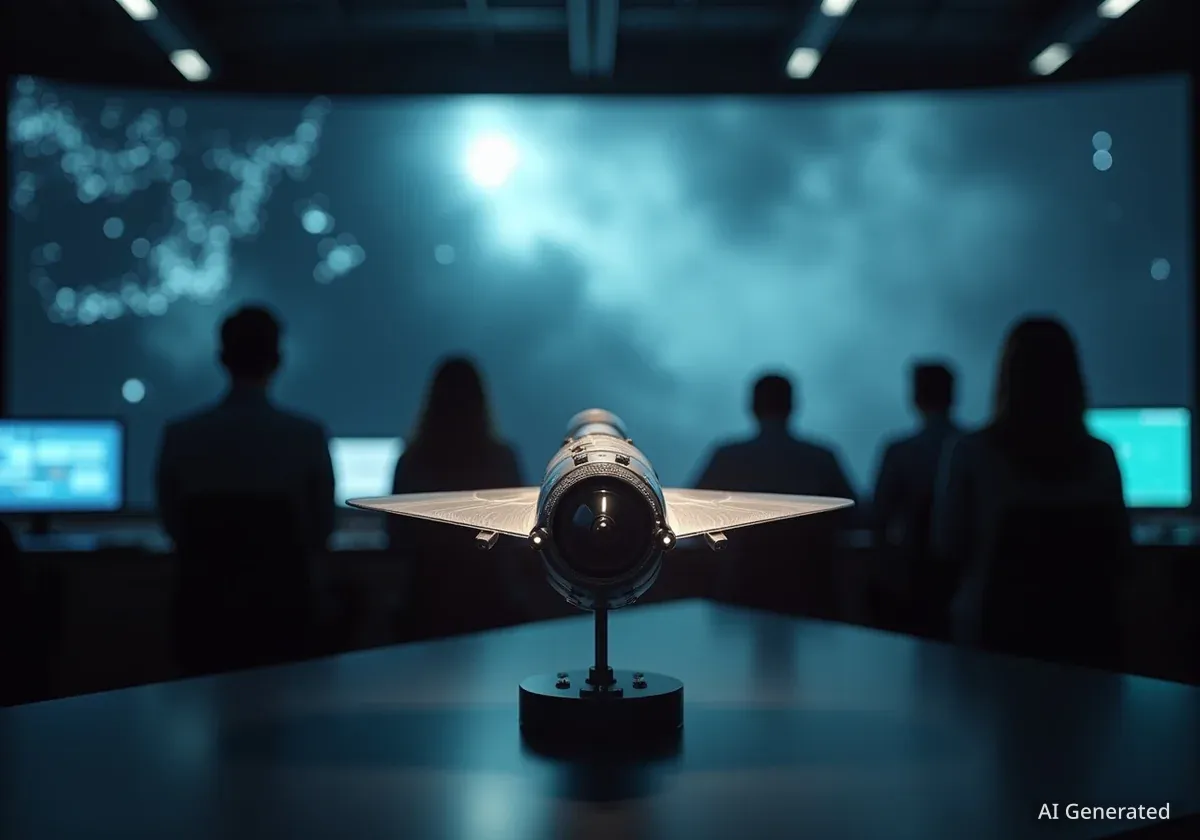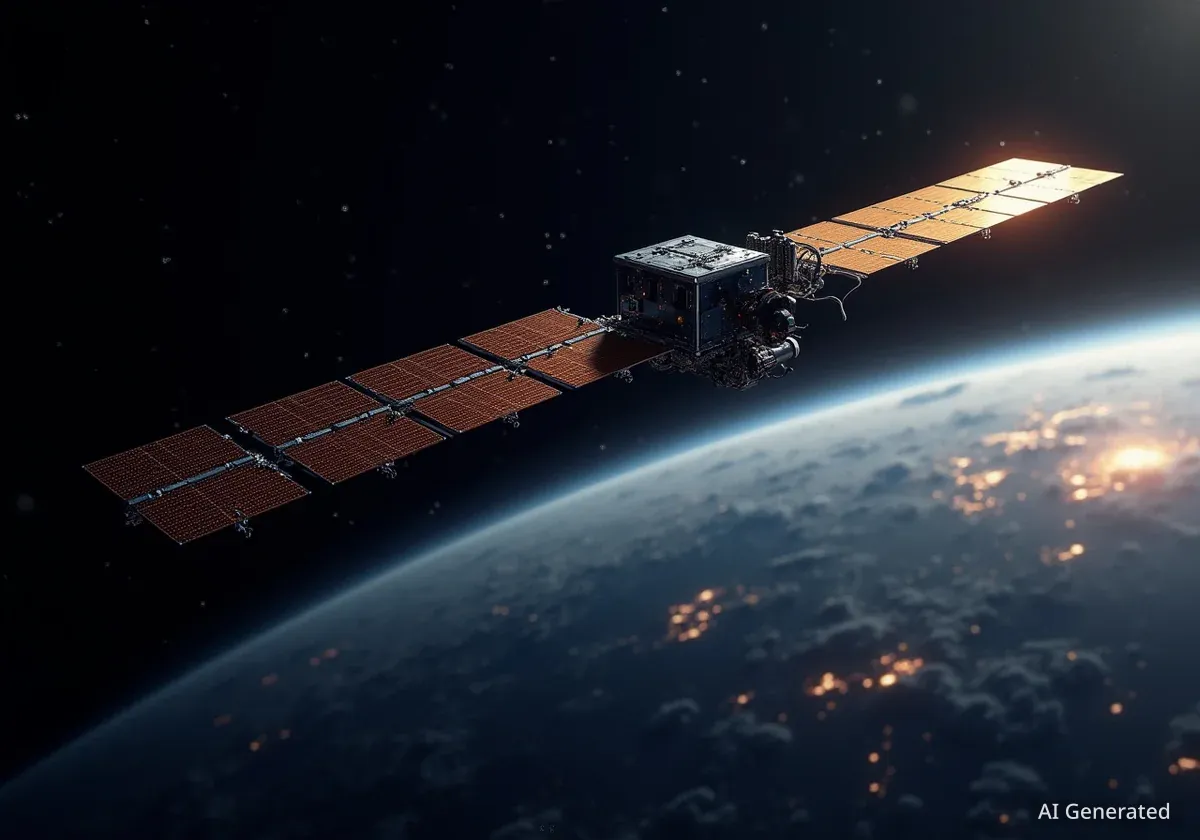The European Space Agency's (ESA) Hera mission is now on its way to the Didymos binary asteroid system. This achievement marks a significant step for planetary defense. The mission faced critical challenges just before its launch on October 7, 2024, including a grounded launcher and a hurricane threat. Despite these obstacles, Hera successfully lifted off, proving its resilience and the dedication of its team.
Key Takeaways
- Hera mission launched successfully despite significant pre-launch obstacles.
- The spacecraft is headed to the Didymos binary asteroid system.
- Hera will investigate the impact site of NASA's DART mission.
- The mission has tested 'self-driving' technology and imaged an asteroid.
- Hera's journey includes a Mars flyby and will reach Didymos in autumn 2026.
Hera's Challenging Path to Space
The Hera mission faced an uncertain future just one year ago. On October 7, 2024, its launch was in doubt. The mission's launcher was grounded due to a previous anomaly. Adding to the tension, Hurricane Milton was approaching Cape Canaveral.
The mission required an immediate lift-off. A delay would have added years to its travel time. This was because Hera needed to perform a specific flyby of Mars. This maneuver was crucial to accelerate its journey to Didymos.
Critical Launch Window
Hera's launch window on October 7, 2024, was extremely narrow. Missing it would have meant a multi-year delay due to orbital mechanics. This highlights the precision required in space missions.
Despite the immense pressure, Hera received launch permission. The weather cleared just 30 minutes before the scheduled liftoff. The mission proceeded as planned, successfully launching into space. This moment was a major relief for the entire team.
Mission Objectives and Early Successes
Hera's primary objective is to study the Didymos binary asteroid system. Specifically, it will investigate the smaller asteroid, Dimorphos. NASA's DART spacecraft impacted Dimorphos in September 2022. Hera will analyze the aftermath of this collision.
Since its launch, Hera has been performing various tests. These include evaluating its 'self-driving' technology. This technology will be vital for navigating around the asteroids. Tests have taken place using Earth and the Moon as reference points.
"What a difference a year makes! Today Hera’s asteroid mission for planetary defence is cruising through deep space on the far side of the Sun, headed to its final destination: the Didymos binary asteroid system."
The spacecraft also completed its planned flyby of Mars. This maneuver provided the necessary gravitational assist. It helped put Hera on its correct trajectory. The mission has also achieved its first asteroid imaging.
First Asteroid Image from Space
Hera successfully imaged its first asteroid from a distance of three million kilometers. This demonstrated the capability of its main Asteroid Framing Camera. This camera is crucial for its upcoming close-up observations.
The imaging success confirms the spacecraft's instruments are functioning as expected. It also provides confidence for the more complex operations ahead. These operations will involve detailed mapping and surface analysis of Dimorphos.
The Journey to Didymos
Hera is currently heading towards aphelion. This is the point in its orbit where it will be furthest from the Sun. This phase is part of its long journey through deep space.
The spacecraft is expected to reach the Didymos system in autumn 2026. Upon arrival, it will begin its detailed investigation. Scientists anticipate gathering critical data on asteroid composition and structural changes.
The Didymos System
The Didymos system consists of a larger asteroid, Didymos, and a smaller moonlet, Dimorphos. NASA's DART mission intentionally impacted Dimorphos to test planetary defense techniques. Hera will provide the first close-up look at the altered asteroid.
This mission is a key component of Europe's contribution to planetary defense efforts. Understanding the effects of kinetic impactors on asteroids is vital. This knowledge could help protect Earth from potential future asteroid threats.
ESA's Broader Space Efforts
The European Space Agency (ESA) serves as Europe's primary gateway to space. Its core mission is to advance Europe's space capabilities. ESA ensures that investments in space benefit European citizens and the global community.
ESA works with 23 Member States. It collaborates with national agencies, institutions, and organizations. These partnerships are crucial for exploring the Solar System and unlocking universal secrets.
Diverse Space Activities
- Solar System Exploration: Missions like Hera contribute to understanding our cosmic neighborhood.
- Universe Secrets: Other ESA projects focus on astrophysics and cosmology, using telescopes like Webb.
- Earth Protection: ESA develops technologies to safeguard Earth's life and infrastructure from space hazards.
- Citizen Benefits: Space data and technology are applied to address Earth's challenges, from climate monitoring to navigation.
- Future Technologies: ESA invests in making space more accessible and developing next-generation space technologies.
The Hera mission highlights ESA's commitment to these goals. It combines scientific exploration with practical applications for planetary safety. The success of Hera's launch and initial operations sets a positive precedent for future missions.
ESA Member States
ESA has 23 Member States. These countries contribute to and benefit from Europe's space programs. This collaborative model enables large-scale missions that individual nations might not undertake alone.
As Hera continues its journey, the global scientific community awaits its findings. The data from Didymos will provide unprecedented insights. These insights will enhance our ability to manage asteroid threats. They will also deepen our understanding of small celestial bodies.
The mission's journey through the Earth system this summer will offer more updates. Follow ESA's official channels for the latest developments. Hera represents a significant achievement in international space cooperation and planetary defense readiness.





